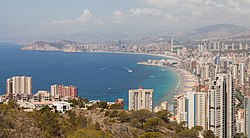2005-2006 Piraean crisis
| 2005-2006 Piraean crisis | |
|---|---|
| Part of 2005 global financial crisis | |
 | |
| Date | December 2005-2006 |
| Location | |
| Caused by | Economic crisis Imposition of Corralito Political instability |
| Resulted in |
|
The 2005-2006 Piraean crisis was a period of financial crisis in Piraea, which was led later by civil unrest, rioting and numerous protests and occupations against the Polakis government and its austerity measures.
During most of 2005, the Piraean government tried to contain the effects of the global crisis, which was severely harming the rest of Euclea, through the impositions of austerity measures in several sectors of the state. However, most measures proved inefficient, as the Piraean Lira, highly dependant on the Euclo, saw its price depreciated at an extremely high speed, leading to a lack of confidence from investors and savers. Preventing a run on banks by depositors, the Minister of Economy and Finance, Lazaros Barou-Karahaliadis, imposed restrictions on the cash withdrawals from banks, which were later extended, leading to the first protests in front of banks.
Political scandals that predated the start of the crisis, and the inefficiency of the government to contain the crisis during most of 2005 soon led to demonstrations of social discomfort with the establishment, which after the fear of banks insolvency, grew around the slogan of "All of them must go!" (Piraean: Όλοι φεύγουν!) as a sign of distrust and contempt to the political class as a whole. The protests led to the formation of new political groups, like Democrats and Change, which tried to capitalise the social movements against the PSEE-LK binomial. Violent clashes between police and protestors finally occurred between the 17 and 21 of August, after two credit associations were proved insolvent and the state refused to recapitalise them; shortly after the two institutions closed down, the government extended the corralito to all currencies and diminished the number of money that people could retire. Protests, which prior to that used to be pacific cacerolazos in the offices of banks in Alikianos Kentro, soon turn violent, leading to the destruction of TrapeLien ATMs and private property. During the five days, three deaths were counted in Alikianos as a result of police brutality.
Evangelos Polakis finally presented his renounce the 21st of August, and was forced to leave the building of the Piraean Senate in a helicopter. Preventing further political instability and to restore the credibility of Piraean institutions, the Senate formed a technocratic government.
Background
Property bubble

Between 1990 and 2005, Piraea suffered a massive phenomenon of urbanisation, fueled by laws that granted construction companies with the legal framework to ignite the start of a property bubble. However, evidence has shown in the past years, that even during the years prior to the decade of the 1990s, property prices and construction numbers were starting to prove toxic for the Piraean economy.
Property prices would finally triple during the first years of the 1990s, period in which the construction of apartment buildings and suburban estates popularised across Piraea; the idea of a bubble soon acquired notoriety, although both the government and construction chambers labeled it as a "construction boom", fearing further stagnation of the Piraean economy. Economic reforms made during the governments of Konstantinos Kondoulis were crucial in providing benefits to the construction sector, which was later accused of providing legal escapes to real estate companies to fuel the business through tax evasion and corruption, leading to a lack of transparency affecting the housing market's credibility. During the entire decade, the central bank of Piraea, as well as the government and its institution, would systematically deny the existence of the property bubble, although critics have pointed to statistics proving the existence of an alarm about the possible effects of a bubble bursting.
The Kondoulis governments sought to attack a double digit inflation, by drastically inducing a reduction of consume. VAT and other taxes were increased, and towards the years 2000-2003, the demand on new construction saw the first signs of decrease; this trend was exacerbated in between 2004 and 2005, when the real estate market dropped with house prices decreasing nearly 10% in those years.
